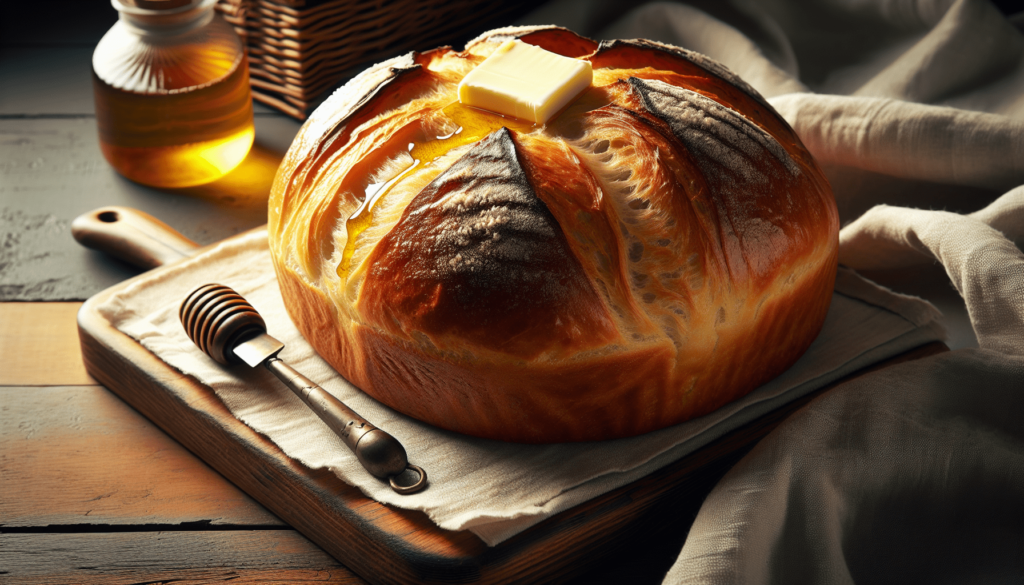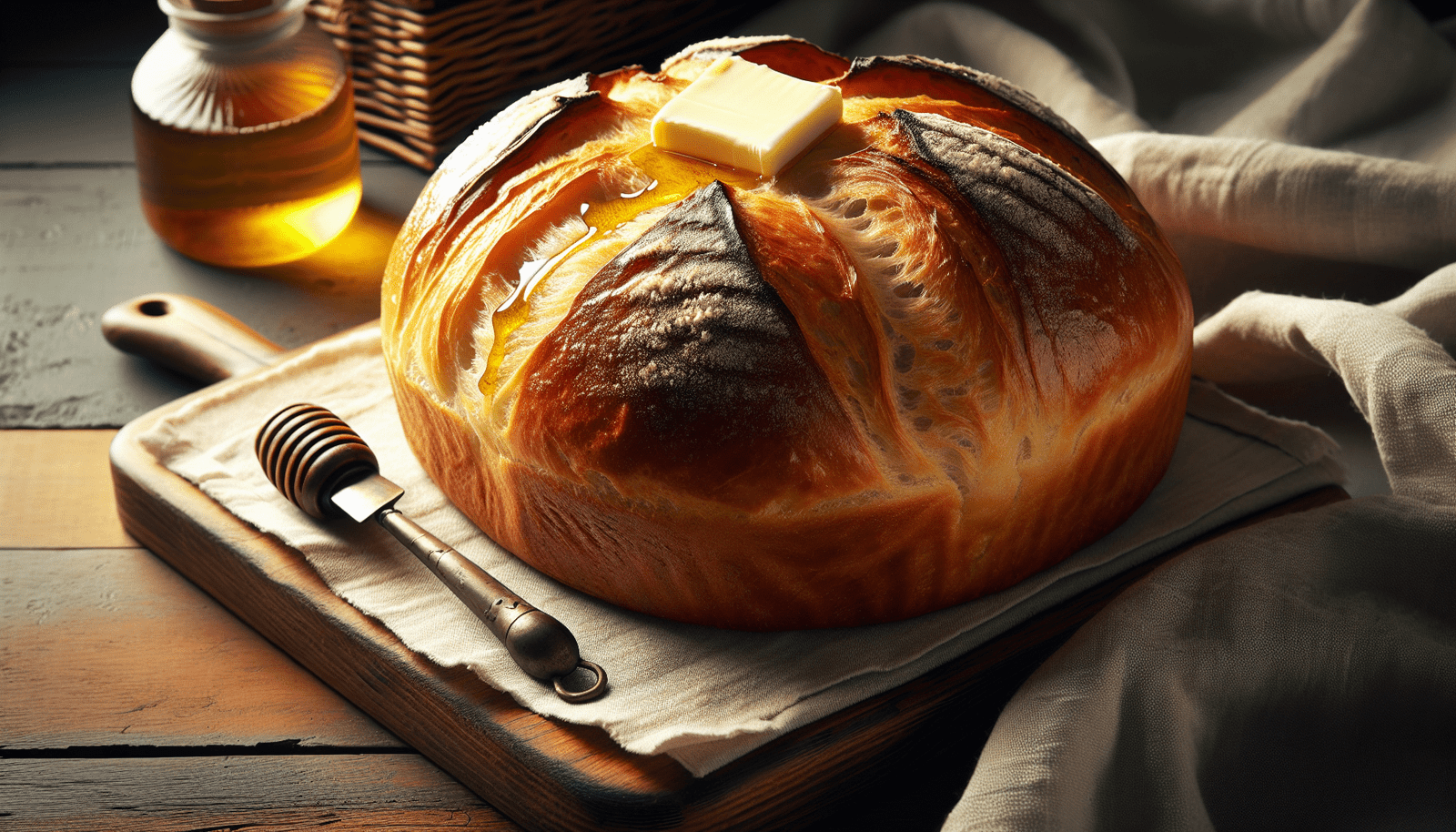In this article, you will discover a simple and delightful Soft Crust Bread Recipe that is sure to become a staple in your baking repertoire. With just a handful of ingredients, you can effortlessly create a loaf with a soft and tender interior, perfectly complemented by a gently crisp crust. Whether you’re a seasoned baker or just starting out, this recipe is guaranteed to bring joy to your kitchen and satisfy your cravings for a freshly baked loaf of bread. Get ready to embrace the wonderful world of homemade bread with this foolproof recipe!

Ingredients
To make a soft crust bread, you will need the following ingredients:
All-purpose flour
All-purpose flour is the base of the bread dough, providing structure and texture.
Yeast
Yeast is responsible for the bread’s rise and gives it a light and airy texture.
Salt
Salt enhances the flavor of the bread and helps to control the fermentation process.
Sugar
Sugar adds a touch of sweetness to the bread and provides food for the yeast during fermentation.
Warm water
Warm water is needed to activate the yeast and help it to dissolve.
Olive oil
Olive oil adds moisture and richness to the bread, keeping it tender and soft.
Preparation
Now that you have gathered your ingredients, it’s time to prepare the dough for your soft crust bread. Follow these steps:
Activate the yeast
In a small bowl, combine warm water, sugar, and yeast. Stir gently and let it sit for about 5 minutes until the mixture becomes frothy and bubbly. This indicates that the yeast is active and ready to use.
Mix the dry ingredients
In a large mixing bowl, whisk together the all-purpose flour and salt until well combined. This will ensure that the salt is evenly distributed throughout the dough.
Combine wet and dry ingredients
Make a well in the center of the dry ingredients and pour in the activated yeast mixture and olive oil. Stir the ingredients together until a shaggy dough forms.
Knead the dough
Transfer the dough onto a lightly floured surface and knead for about 10 minutes, or until the dough becomes smooth and elastic. This will develop the gluten in the flour, giving the bread its structure and texture.
First rise
Place the kneaded dough into a clean, lightly oiled bowl and cover it with a kitchen towel or plastic wrap. Let it rise in a warm, draft-free area for approximately 1 to 1.5 hours, or until it has doubled in size.
Shape the dough
Once the dough has risen, gently punch it down to release any air bubbles. Transfer it to a floured surface and shape it into your desired bread shape, such as a loaf or rolls.
Second rise
Place the shaped dough onto a baking tray lined with parchment paper or greased with olive oil. Cover it loosely with a kitchen towel and let it rise for another 30 to 45 minutes, or until it has doubled in size again.
Baking the bread
Preheat your oven to 375°F (190°C). Once the bread has completed its second rise, bake it in the preheated oven for 25 to 30 minutes, or until it turns golden brown and sounds hollow when tapped on the bottom. Remove the bread from the oven and let it cool on a wire rack before slicing and enjoying.
Tips and Tricks
To ensure the success of your soft crust bread, consider the following tips and tricks:
Measuring ingredients accurately
Accurate measurements are crucial to the success of your bread. Use measuring cups and spoons specifically designed for dry and liquid ingredients and level off the excess for precise measurements.
Using the right water temperature
The water temperature should be warm but not too hot. It should be around 110°F (43°C) to activate the yeast properly. Water that is too hot can kill the yeast, while water that is too cold may not activate it enough.
Proper kneading techniques
Kneading is an important step in developing the gluten in the bread dough. Use the heel of your hand to push the dough away from you and then fold it back towards you, giving it a quarter turn after each fold. Repeat this motion for about 10 minutes or until the dough becomes smooth and elastic.
Creating a good rising environment
To help the dough rise properly, place it in a warm, draft-free environment. You can heat your oven to the lowest temperature for a few minutes, then turn it off and place the covered dough inside. Alternatively, cover the dough with a clean kitchen towel and place it in a warm spot in your kitchen.
Adding steam during baking
To achieve a soft crust, create steam in the oven during the bread’s initial stages of baking. You can place a tray of ice cubes on the bottom rack or spritz the walls of the oven with water to create steam, which will keep the crust soft.
Storing the bread properly
To keep your soft crust bread fresh, store it in an airtight container or wrapped tightly in plastic wrap. Bread tends to go stale quickly, so it’s best to consume it within a few days. To extend its shelf life, you can freeze the bread in slices and toast them when needed.
Variations
If you’re looking to add some exciting flavors and textures to your soft crust bread, consider these delicious variations:
Garlic and herb bread
Mix minced garlic and freshly chopped herbs, such as rosemary, thyme, or parsley, into the dough during the mixing stage for a savory and aromatic loaf.
Cheese bread
Add your favorite shredded cheese, such as cheddar, mozzarella, or Parmesan, to the dough during the mixing stage. The melted cheese will lend a delightful richness to the bread.
Cinnamon swirl bread
For a sweet treat, combine brown sugar and ground cinnamon in a small bowl. Roll out the bread dough into a rectangle, spread the cinnamon sugar mixture evenly, and then roll it up tightly before shaping and baking.
Whole wheat bread
Substitute part or all of the all-purpose flour with whole wheat flour for a healthier spin on the classic soft crust bread. The nuttiness of the whole wheat flour adds depth of flavor.
Oatmeal bread
Mix in rolled oats into the dough for a hearty and wholesome bread. The oats will give the bread a slightly chewy texture and a subtle nutty flavor.

Troubleshooting
Encountering issues with your soft crust bread? Here are some troubleshooting tips to help you overcome common problems:
Dense bread
If your bread turns out dense, it could be due to insufficient rising or over-kneading. Ensure that you give the dough enough time to rise and proof, and avoid over-kneading, which can cause the bread to be tough.
Bread collapses during baking
A bread that collapses during baking may be a result of over-proofing or too much moisture in the dough. Be mindful of the rising times and ensure that the dough has just doubled in size before baking. Additionally, consider adjusting the amount of water or flour in the dough.
Bread is too dense after rising
If your bread rises beautifully but turns out too dense, it may be due to under-kneading or not incorporating enough air into the dough. Pay attention to the kneading process and make sure to knead the dough until it feels elastic and springy.
Bread has a tough crust
If your bread has a tough crust, it could be due to inadequate steam during baking. Ensure that your oven is properly preheated and create steam by using ice cubes or spritzing water onto the oven walls during the initial stages of baking.
With these helpful tips, you can confidently make your own soft crust bread at home. Experiment with different flavors and variations, and enjoy the satisfaction of creating delicious homemade bread. Happy baking!

